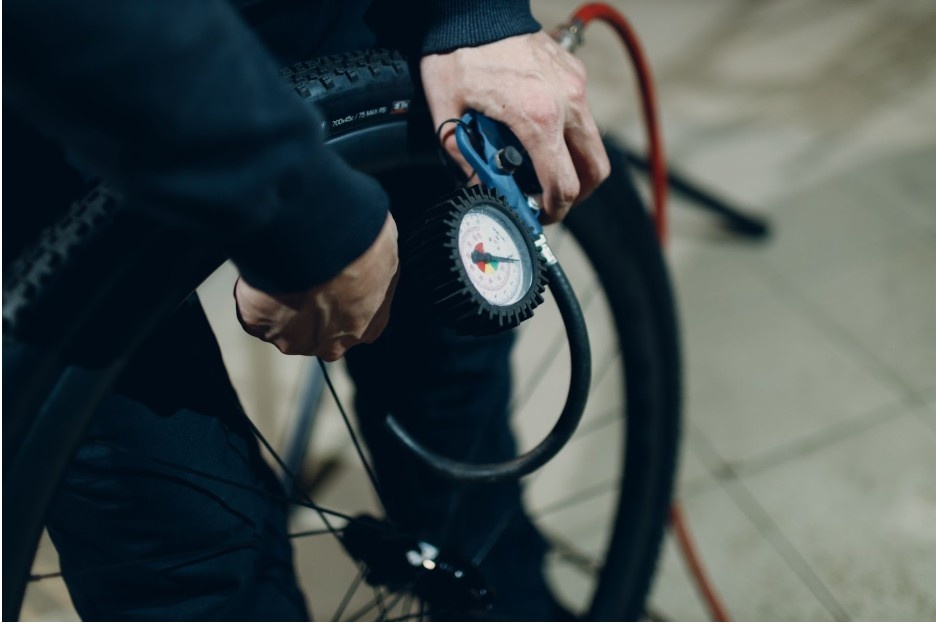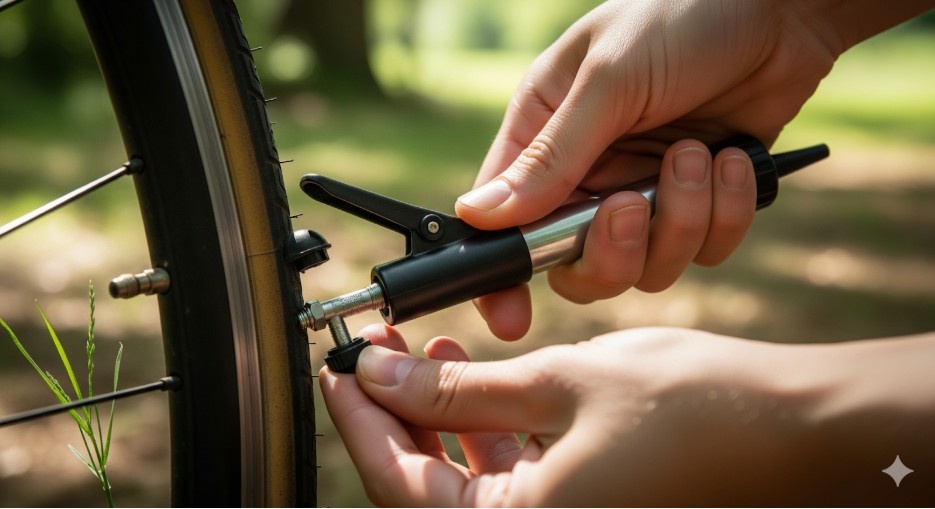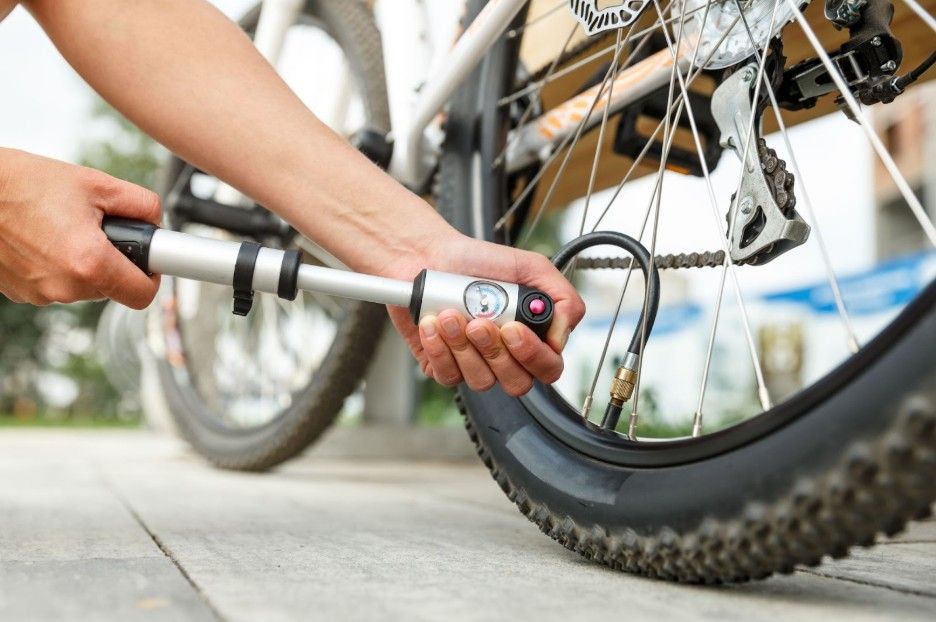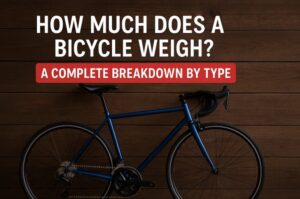If you ride often, you already know that nothing slows down a ride faster than soft tires. Learning how to use a bike pump is one of the most valuable skills every cyclist should master. Luckily, once you understand valve types and pump styles, inflating your tires becomes quick and stress-free. In this guide, I’ll walk you through each step, share a handy comparison table, and answer common questions riders often have.
Why Proper Tire Pressure Matters
Tire pressure affects both performance and comfort. A higher PSI gives you speed and efficiency, while a slightly lower PSI improves grip and cushioning. Under-inflated tires can cause sluggish rides and even flats, so keeping an eye on pressure is a must.
Step 1: Find the Right Pressure

Look at the tire’s sidewall, and you’ll see a PSI range.
- Inflate to the higher number if you want efficiency on smooth roads.
- Stay closer to the lower number for better traction and comfort on rough terrain.
Step 2: Identify and Prepare the Valve
Before you can pump, you need to know your valve type. Bikes usually have either Schrader or Presta valves.
| Feature | Schrader Valve | Presta Valve |
| Appearance | Wider, like a car tire valve | Slimmer, longer, common on road bikes |
| Preparation | Remove dust cap, press center pin to release air | Unscrew small lock nut, press pin to unstick |
| Ease of Use | Very straightforward | Takes a little practice |
Tip: If you’re unsure, compare your bike’s valve to your car tire—if it looks the same, it’s Schrader.
Step 3: Attach the Pump Head

Now, grab your pump and match it to the valve.
- Separate heads: Choose the right opening (larger for Schrader, smaller for Presta).
- Universal heads: Some pumps require flipping a seal inside the head to fit the valve.
Lock it in place by flipping the lever—usually down for Schrader, up for Presta.
Step 4: Inflate the Tire
With the pump secure:
- Place your feet on the pump base for stability.
- Use smooth, steady strokes to pump air in.
- Watch the gauge closely until you hit the target PSI.
Pro tip: Don’t rush. Consistent strokes give you the most accurate pressure reading.
Step 5: Remove the Pump and Close the Valve

Once your tire reaches the correct pressure:
- Flip the lever back to unlock.
- Pull the head off quickly and straight. (A short hiss of air is normal—it’s just from the hose, not your tire.)
- Tighten the Presta nut or replace the Schrader dust cap.
And you’re done—your bike is ready to roll!
FAQs About How to Use a Bike Pump
1. How often should I check my tire pressure?
I recommend checking before every ride if you cycle frequently. Road bike tires can lose pressure daily, while mountain bike tires hold air a bit longer.
2. Can I use a car pump on my bike tires?
Yes, but only if you have Schrader valves. For Presta valves, you’ll need an adapter to fit the car pump nozzle.
3. What happens if I over-inflate my tires?
Too much pressure makes your ride harsh and increases the risk of blowouts, especially in hot weather. Always stick to the printed PSI range.
4. Do I need a special pump for tubeless tires?
Some tubeless setups need a pump with a high-volume chamber to seat the tire bead. Standard floor pumps work for maintaining pressure once the tires are set.
Pump It Up and Ride with Confidence
Learning how to use a bike pump takes just a few tries, but it’s a skill that pays off every single ride. Whether you’re topping off before a daily commute or preparing for a weekend trail adventure, proper tire inflation keeps you safe, smooth, and speedy. Next time you hear that telltale “soft tire” squish, you’ll know exactly what to do.






